Club Brugge have had a fantastic start to the new Belgian Pro League season, with the Belgian side sitting top of the table after the first four matchdays, having scored 14 goals in those four matches. They also scored five or more goals in their last four matches in all competitions, another outstanding statistic for Ronny Deila’s side.
Another thing is that the goals have been spread evenly between a good majority of the attacking players. Looking at the goals for each key attacking player, Philip Zinckernagel and Tajon Buchanan each have three, Andreas Skov Olsen has five, along with strikers Igor Thiago and Roman Yaremchuk each scoring four in all competitions. This relatively even spread of goals shows that Deila is looking to circulate the ball to all areas of the final third and is not just looking to have one key goalscorer in this side.
This tactical analysis will look at some of the attacking principles and tactics that are beginning to show up as the Norwegian manager begins to grasp his new side. We will break these down in more detail, analysing what exactly has made them such a high-octane attacking side so far in this young season.
Quick look at the numbers
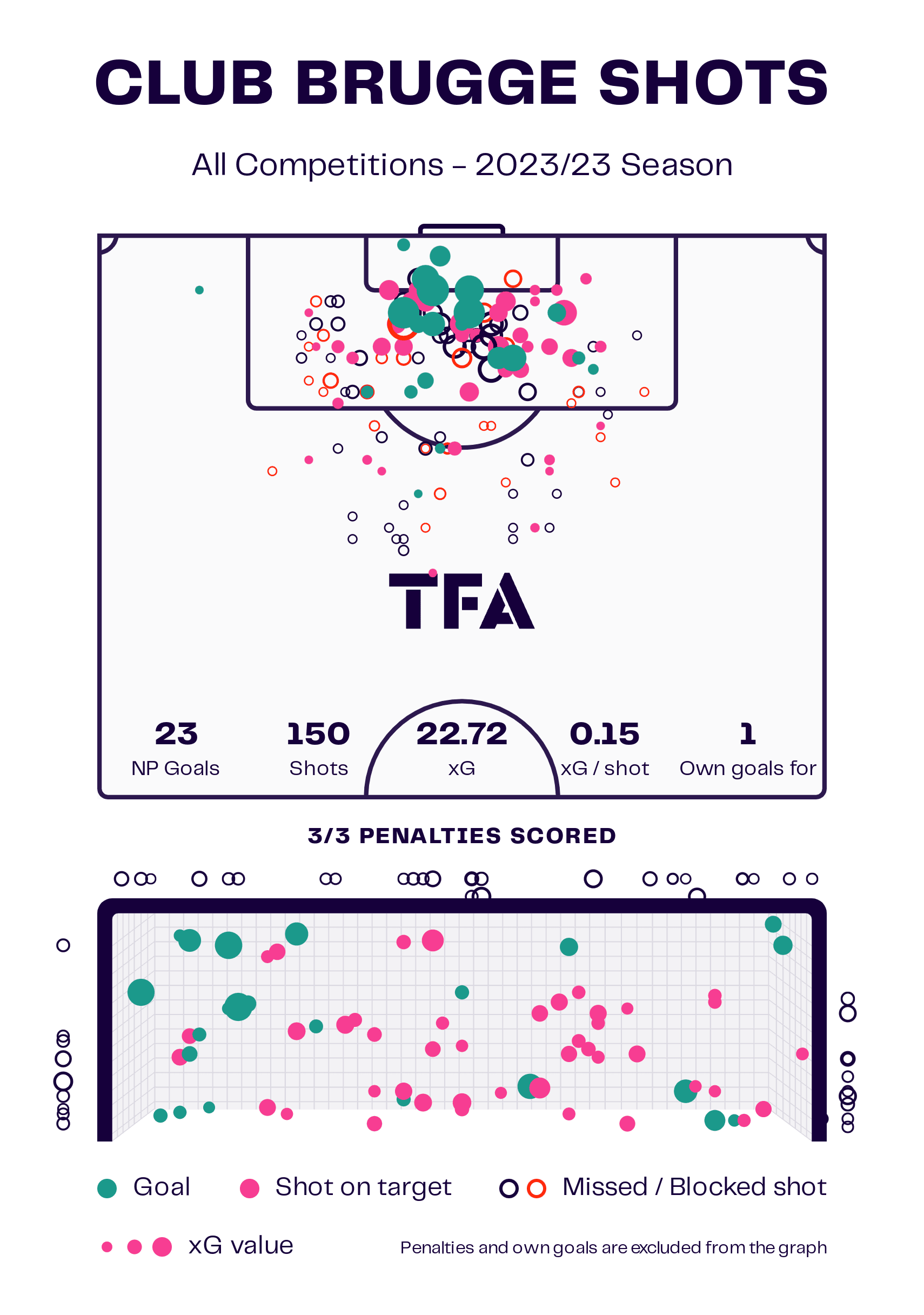
First, we will take a look at some statistics related to this superb start to the season from an attacking perspective for Ronny Deila’s Club Brugge. The data viz graphic above shows the number of shots the Belgian side has taken this season, their number of goals scored and xG per shot. The Belgian side led all clubs in the country in goals scored so far in all competitions this season, with a staggering 26 goals scored between their first four league matches and their qualifying games in the UEFA Europa Conference League.
The Belgian side also have 27 key passes already this season in the Belgian Pro League, more than any other side. They only rank 5th in crosses. However, the Belgian side does like to create chances from the wide areas, though most of these occur from penetrating runs from the wide players and full-backs who advance into these attacking areas. This is not to say the wide players for Deila do not look to cross the ball into the box; they do it more clinically than other sides in Belgium so far this season. Throughout this analysis, we will look at just how Deila has set his Club Brugge side up to attack and show some examples of these principles along the way.
Looking to create overloads and attack the wide channels with dribbling and quick ball circulation
As mentioned previously, a good amount of Club Brugge’s attacking chances come from the wide areas, but not often in the form of crossing. Instead, Deila’s side instead looks to use penetrating runs with the ball at the attacker’s feet or off-the-ball movement that allows the penetrating passes to be played in these wide areas and create overloads against opposition defences.
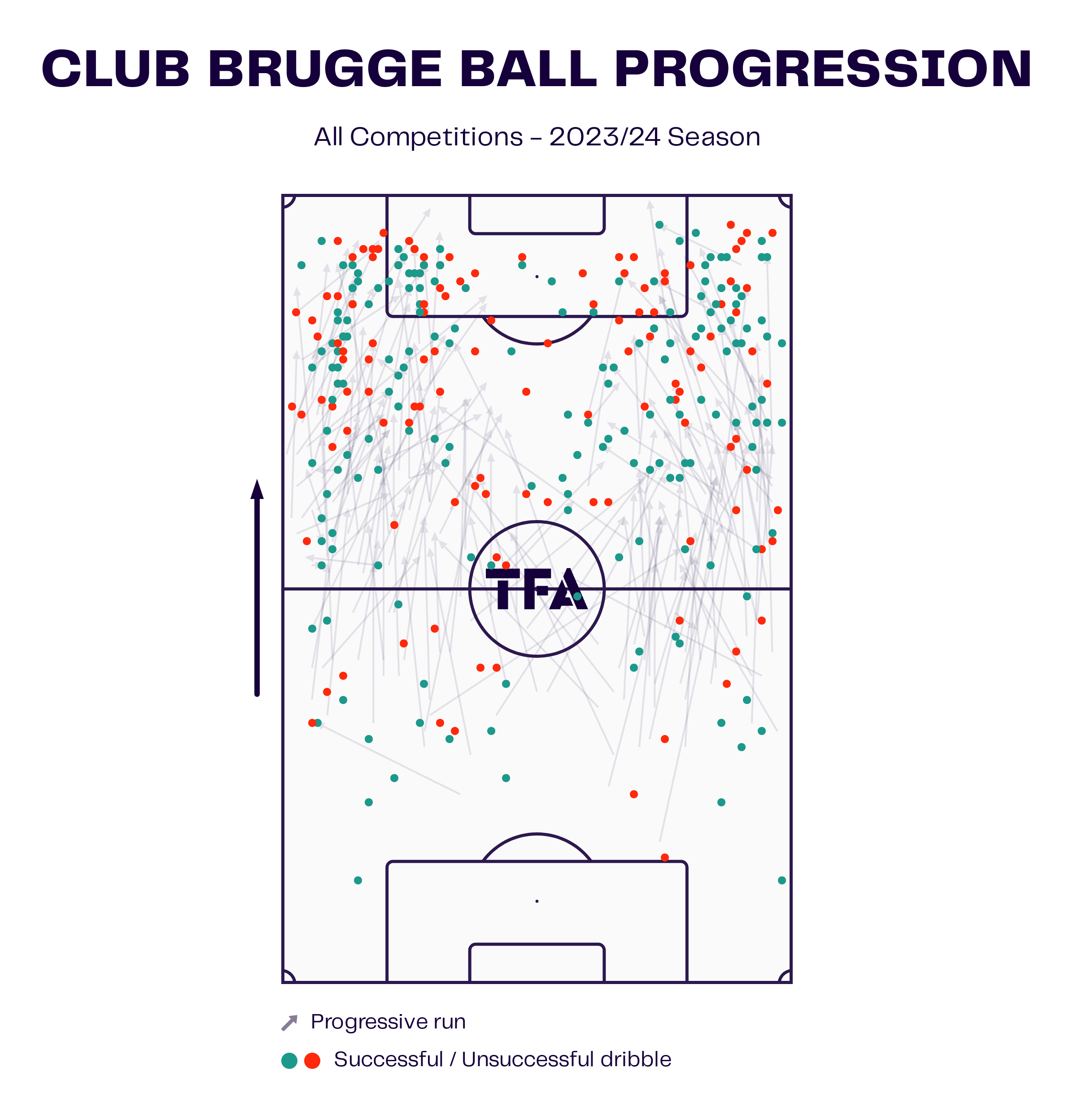
The data viz graphic above shows the Club Brugge ball progression in all competitions this season under Ronny Deila. As the graphic highlights, a high amount of dribbles and progressive runs are attempted in the wide channels in the final third of the pitch. In the former Celtic manager’s preferred 4-2-3-1 system, the dribbling ability of Antonio Nusa and Andreas Skov Olsen and the overlapping runs of Canadian international Tajon Buchanan lend part to this type of attacking style. In the central attacking position, Philip Zinckernagel is also a player who likes to make penetrating runs beyond the opposition’s backline, which also lends a hand to how well Club Brugge progresses the ball without passing.
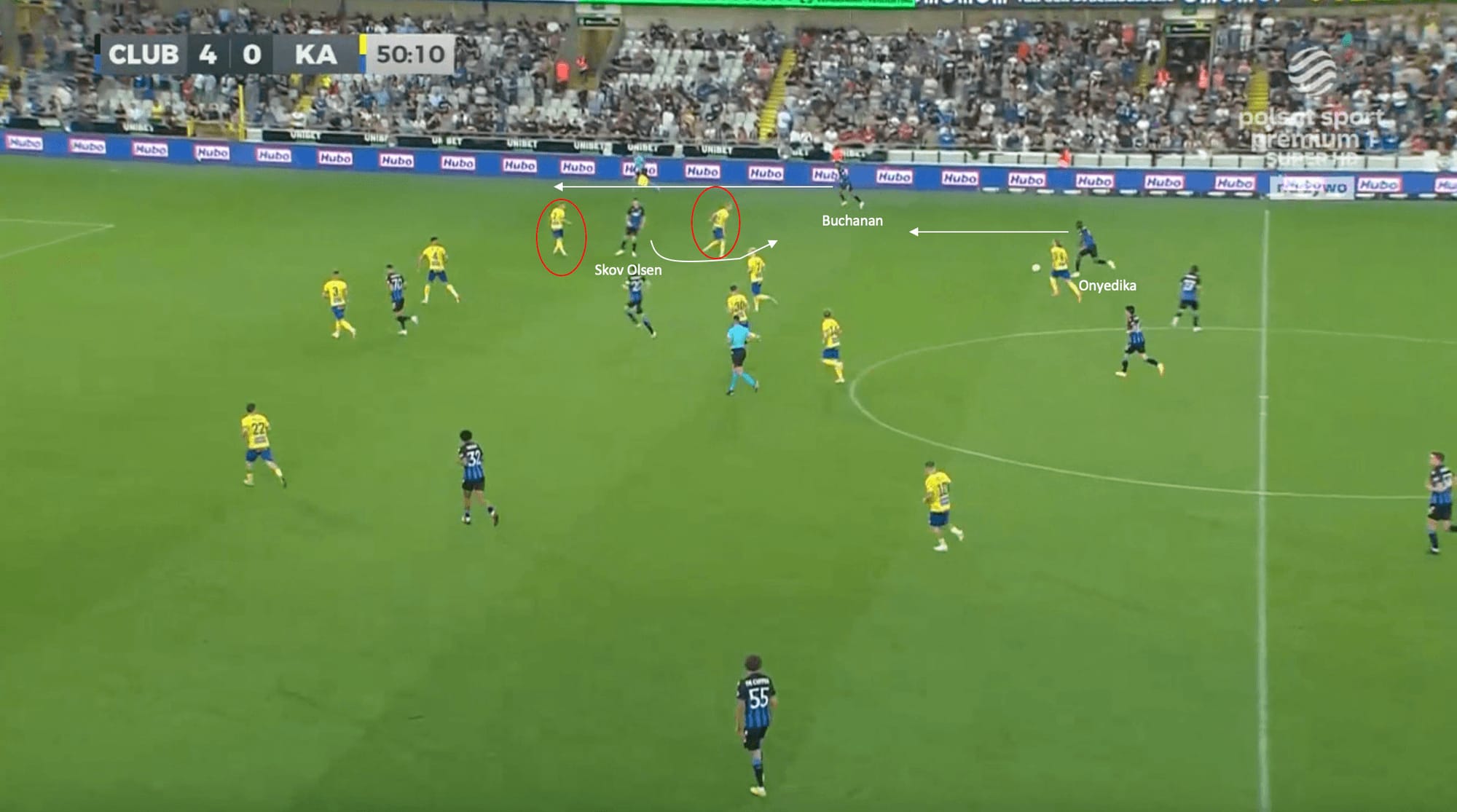
The image above shows an attacking move from Club Brugge that created a goalscoring chance. In this phase of play above from the recent Europa Conference League qualifying against KA of Iceland, the Belgian side are in possession, with midfielder Raphael Onyedika driving into the opposition’s attacking half.
In this attacking move, Tajon Buchanan, who is playing at right back, also drives into the attacking half, making an overlapping run past the inverted Andreas Skov Olsen. With Onyedika driving into this zone, it creates an overload against the KA defenders. Due to Skov Olsen’s inverted position and intelligence to drop into space, he attracts the attention of both defenders, with the Danish winger dropping into space in front of the KA player in front of him. This allows Buchanan to run by the defenders unmarked, with the ball played by Onyedika into the space beyond the KA backline.
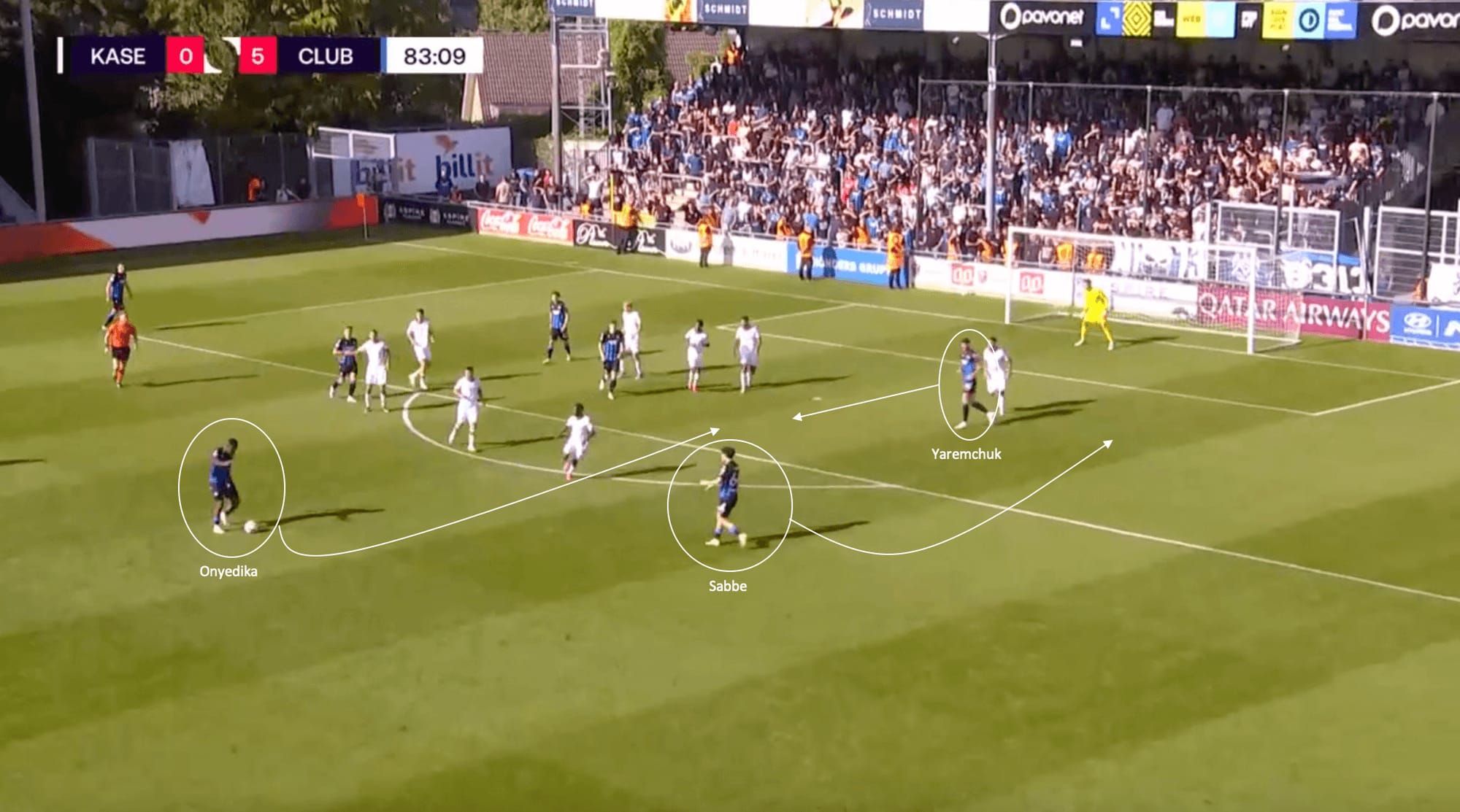
The image above shows a similar attacking phase for Club Brugge, with the ball in possession of Raphael Onyedika, who drives forward to receive the ball in the final third after an initial set piece from the Belgian side. As is similar to the previous image, due to the Nigerian midfielder’s positioning, Club Brugge have again created an overload on the right flank. This is due to the movement of the full-back getting advanced, this time 18-year-old Kyriani Sabbe.
In the previous example, the movement of Skov Olsen attracted the attention of the opposition defenders centrally; this time, it is due to Ukrainian international Roman Yaremchuk. The striker drops towards the edge of the penalty box, with the wing-back of Eupen man marking him into this zone. This allows Sabbe the ability to be unmarked in the wide channel. As a result, Onyedika’s pass finds Yaremchuk centrally before he lays it off one time into the path of the full-back, who can send a dangerous cross into the box.
Like the previous example, this can demonstrate the tendency for this Club Brugge side to look for overloads in the wide channels. Under Ronny Deila, this attacking principle has paid dividends for the Belgian side this season, as demonstrated in both domestic and European play.
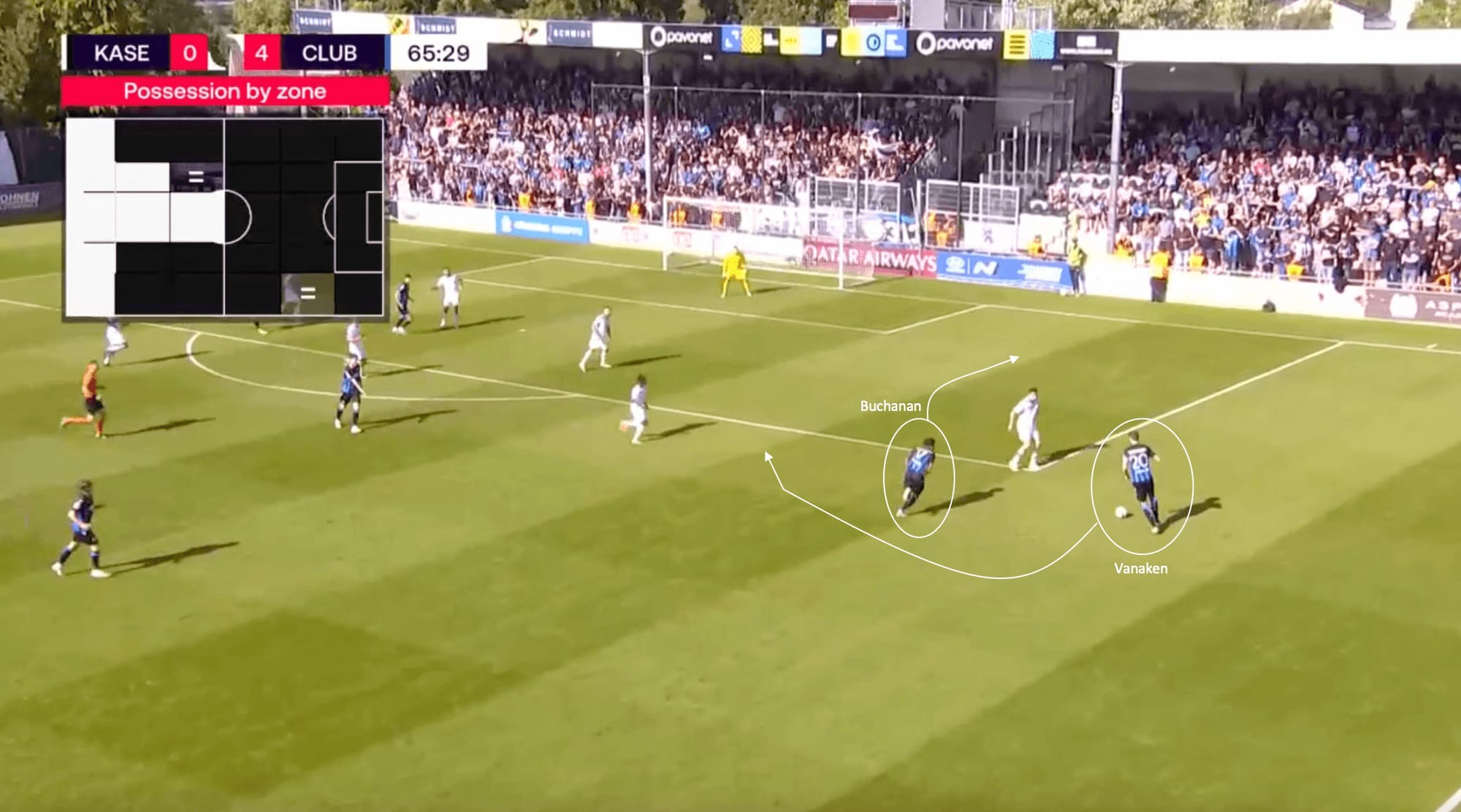
The image above again shows how Club Brugge have looked to attack this season under Ronny Deila. Once again, the ball is circulated into the wide channel to create an overload against the opposition’s defence. In this phase of play against Eupen, it proved successful yet again. The ball is quickly rotated from the far touchline to the near one, received by former West Ham United target Hans Vanaken. Meanwhile, Tajon Buchanan had gotten forward, creating an overload against the Eupen wing-back.
The Canadian international makes an underlapping run into the space between the wing-back, who has become detached from the back line, and the closest centre-back. This underlapping run can give Vanaken the space to cut inside on his left foot as the wing-back drops off, and the closest midfielder tracks the run of Buchanan. With this newfound space, the Belgian international can play a cross into the back post area, with the attacker able to run onto the end of it and head the ball home past Chelsea loanee Gaga Slonina in the Eupen net.
This section has shown that from open play this season, Ronny Deila has utilised overloads and penetrating runs and carries to great success. These movements, both on and off the ball, allow space for both runners and players in possession to either drive forward or send balls into the danger areas from the flanks. It has also allowed Club Brugge to be very successful from an attacking standpoint, with their 14 goals in 4 league matches testament to this success.
Threat from attacking corners
Another quick thing to look at from a Club Brugge perspective this season is the success they have managed to have from set pieces, particularly corner kicks. In football, excelling at set pieces can sometimes be the difference between a win, a draw, a loss, or a draw. Well, this season under Ronny Deila, Club Brugge have been having a lot of success on corners, with them almost always making first contact, being dangerous, and scoring goals.
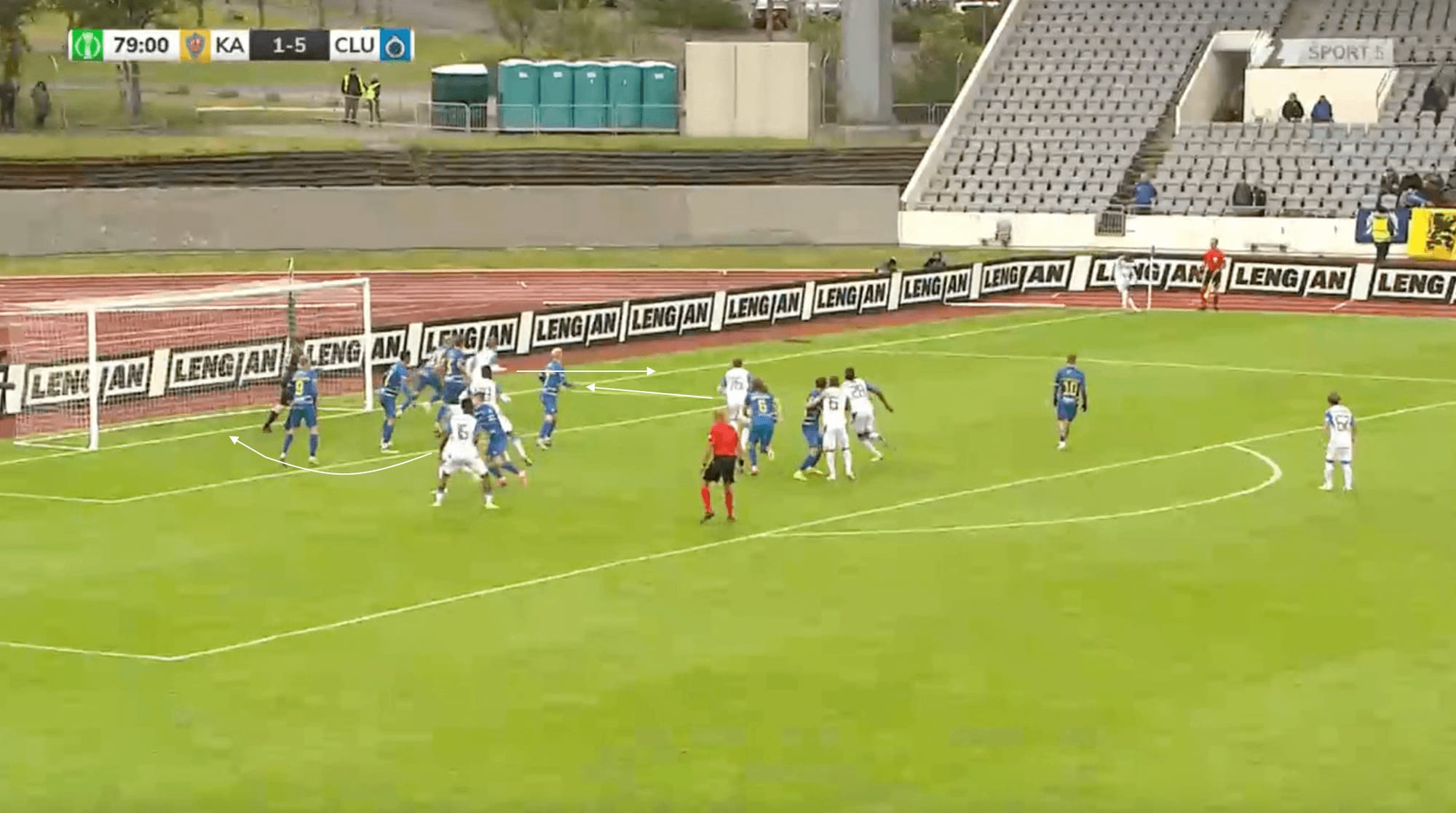
The image above shows the attacking corner setup from Ronny Deila that has brought the Belgian side a lot of success so far this season. In regards to the setup, one player is situated on the keeper before the ball is played, with a stack of players to the right of the penalty spot, a stack in the centre of the goal, and one player situated on the edge of the penalty area to frame and look to win the second ball.
When the ball is played in, the player on the keeper comes off and makes a run into the space just outside the six-yard box, with the goal to drag the front post player out with him. Then, the three stack centrally make runs towards the near post, with the other stack moving towards the back post. The ultimate goal is for the player running off the goalkeeper to flick it on to either the runners behind him at the front or back post. From this corner, the ball is aimed towards the back post, almost going into the back of the net from the flick-on. This setup has worked successfully so far this season, so it would be likely to see the Norwegian manager stick with this tactical setup.
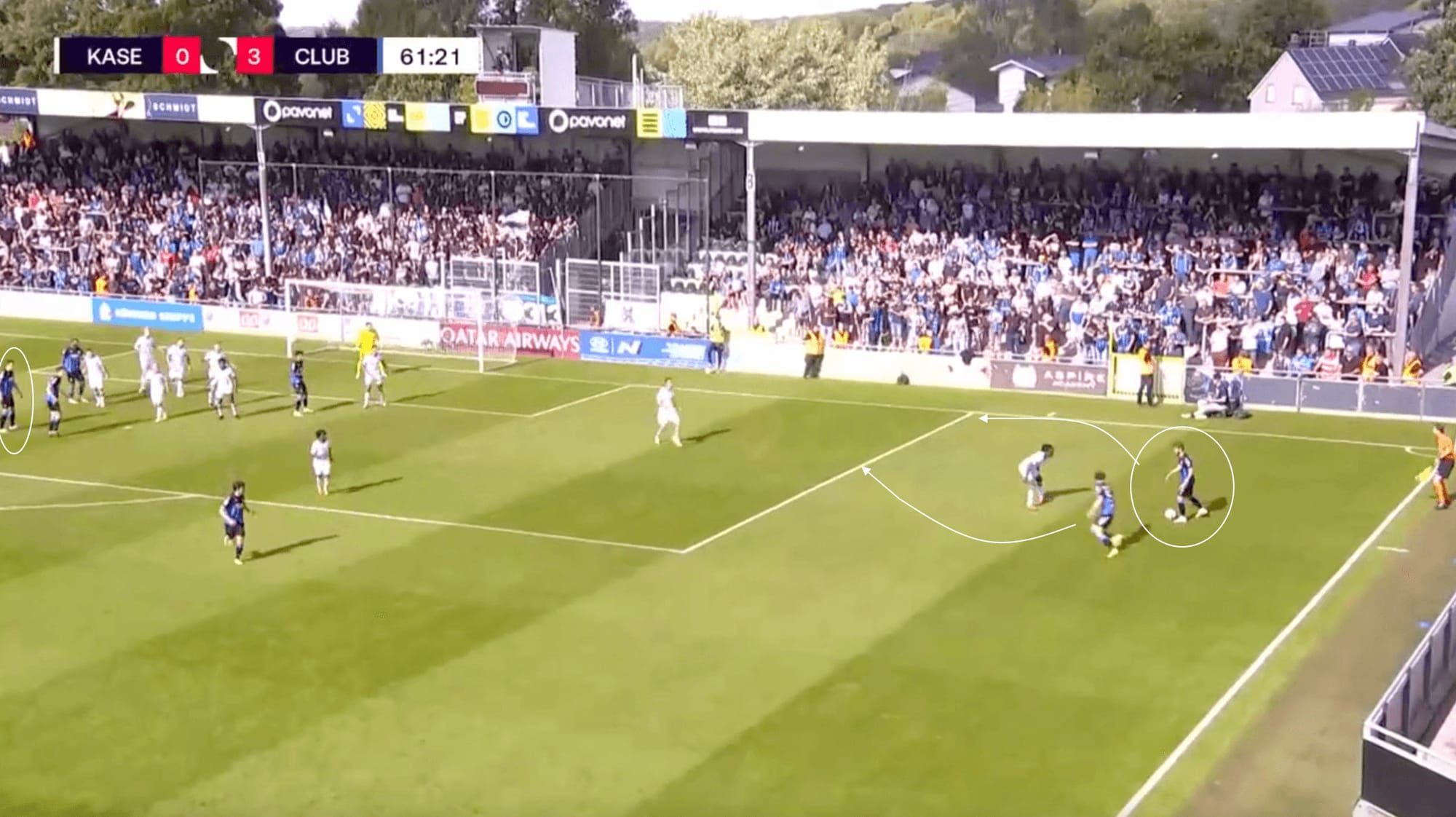
Another thing to note is that Deila has also implemented a short corner approach, and this one has also had success, with Club scoring a couple of goals off of this so far. In this phase of play above, the corner is played short to pull apart Eupen’s zonal defensive system defensively. In this attacking corner, it works, with the player on the edge of the six coming out of the zone to make it numbers even down this near flank.
The player in possession, Zinckernagel, shows to the outside before driving inside, with the defender unsure who to mark. This allows the Danish midfielder time to send a cross into the box, with the ball being headed towards the edge of the box by an Eupen defender. This is where the player circled comes into effect, with him able to touch the ball down to Hans Vanaken, who was framing for a second ball on the edge of the penalty area. His ensuing first-time shot is a rocket, going past the goalkeeper and into the back of the net for a Club Brugge goal.
As this short section has shown, attacking set pieces have also been a strength for Ronny Deila this season at Club Brugge, and if this is to continue, it will be tough stopping the Belgian side from regaining their title this season.
Conclusion
As this tactical analysis has shown, Ronny Deila has transformed the fortunes of Club Brugge this season, especially with the turmoil the club has experienced since Alfred Schreuder left for Ajax at the end of the 2021/22 season. With three managers last season, the Belgian giants will hope that the Norwegian is the one that will stick with them for the long term, and early results seem to be promising.



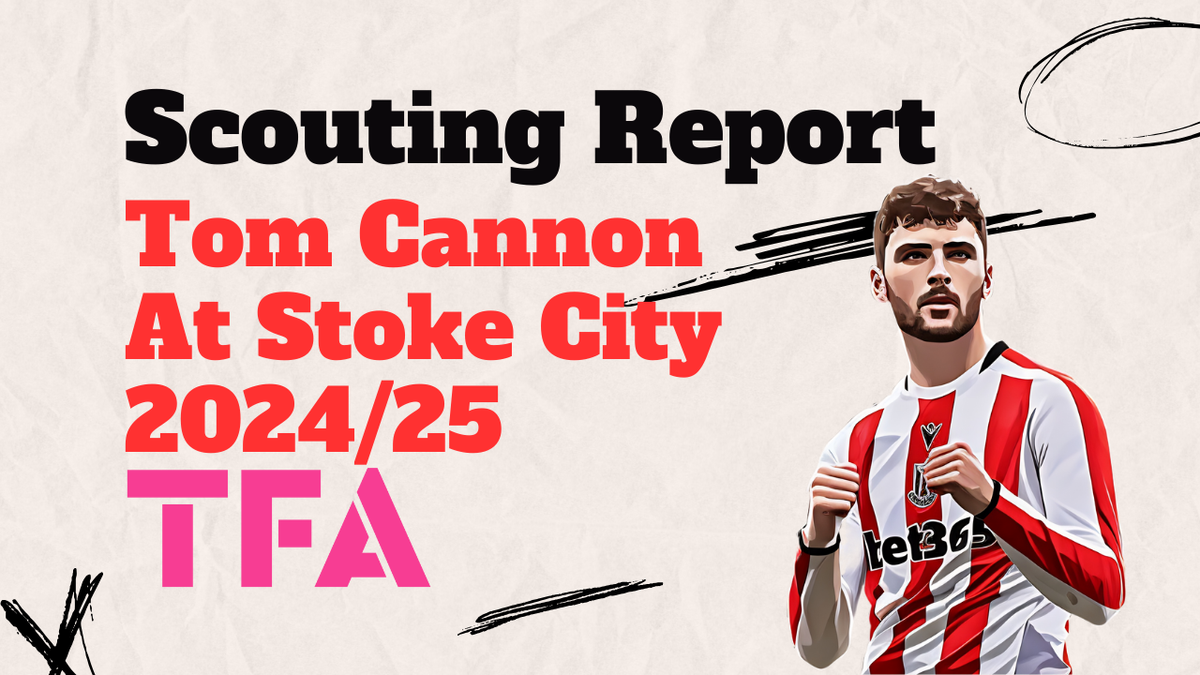

Comments